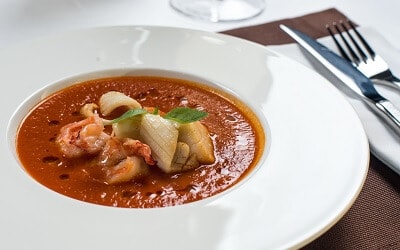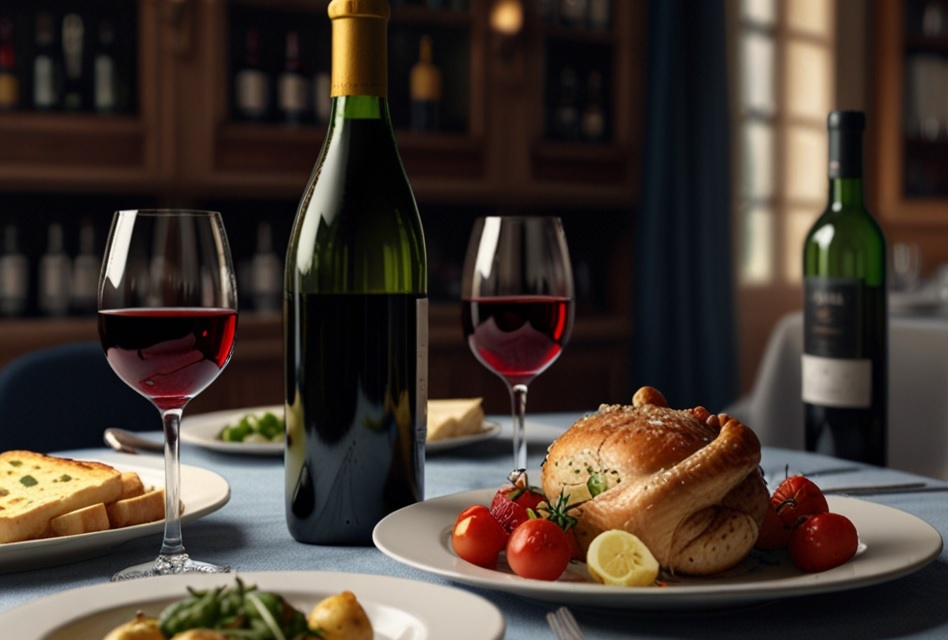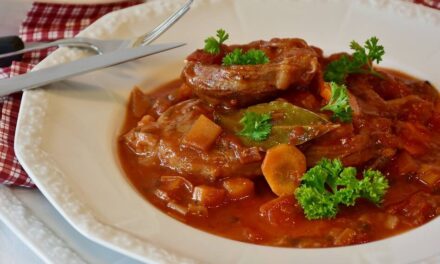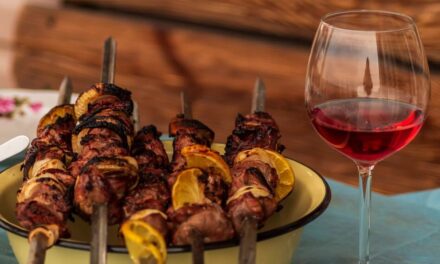French cuisine and wine have long been celebrated for their rich traditions and impeccable reputation. Renowned for their ability to transform dining into an art form, French food and wine pairings offer a symphony of flavors that captivate the senses. This harmonious blend of taste and culture invites exploration into the finest combinations, promising an unforgettable culinary journey. Let us discover the allure of these pairings and uncover the secrets behind the most exquisite French dining experiences.
A Brief Introduction to French Cuisine
French cuisine is a celebrated tradition known for its elegance and variety. More than just a collection of tasty dishes, it reflects a rich cultural heritage developed over centuries. Historically, meals have been times to gather, celebrate, and enjoy the pleasures of taste and hospitality. While this sense of hospitality is universal in all of France, each region has its own specialties. From the hearty cassoulet of Languedoc to the fresh seafood of Brittany and the rich coq au vin of Burgundy, each offers a delicious experience of unique flavors.
The heart of French cuisine lies in balance. Regional diversity and seasonality are key, as are the layers of flavor and texture in each meal. This culinary tradition continues to delight taste buds around the world.
French cuisine often features rich ingredients like butter and cream, complemented by garlic and fresh herbs. Traditional cooking methods, such as braising and roasting, enhance these natural flavors, while seasonings like thyme, rosemary, and bay leaves add depth. The resulting flavor profiles range from rich and savory to light and delicate, creating a diverse palette that pairs beautifully with a variety of wines.
The Basics of Pairing French Food and Wine
Wine pairing is both an art and a science, enhancing the dining experience from good to extraordinary. By understanding some basic principles, even beginners can make great choices. Here are some basic rules:
- Match the Weight: Pair lighter wines with lighter dishes, such as white wines with delicate fish, chicken, or vegetarian meals. Fuller-bodied wines go well with heavier meals like beef or lamb.
- Flavor Profiles: Complement similar flavors, such as a fruity wines and fruity dishes. Alternatively, create contrast by pairing sweet wines with spicy foods.
- Wine Acidity: Choose wines with higher acidity to cut through rich, creamy sauces or fatty dishes, enhancing the overall taste.
- Alcohol Content: Pair wines with moderate alcohol levels with spicy foods to avoid intensifying the heat, while higher alcohol wines can complement rich, savory dishes.
Remember, when dining out, you can always ask the venue’s sommelier for advise.
French Wines for Every Palate
French wines offer a remarkable diversity, resulting from centuries of winemaking traditions and many world-renowned vineyards. With hundreds of grape varieties used and a wide range of terroir that reflects in wine characteristics, France offers something to suit every palate.
The robust reds of Bordeaux and Burgundy are renowned for their aromatic elegance, making them perfect companions for rich French cuisine. Wines from the Rhone Valley, with their dark berry flavors and spice, pair beautifully with hearty dishes like Coq au Vin or Ratatouille, balancing bold sauces with their rich tannins.
In the realm of white wines, Burgundy’s Chardonnays are celebrated for their buttery and oaky notes, ideal for creamy French dishes. The crisp Sauvignon Blancs from the Loire Valley complement fresh, zesty dishes like Salade Niçoise or seafood platters, with their lively acidity enhancing the flavors.
Rosé wines, particularly those from Provence, offer a refreshing option with their light, fruity profiles, perfect for summer meals and lighter fare.
Sparkling wines, especially Champagnes from Epernay, are synonymous with celebration. Their bright acidity and effervescence make them excellent partners for luxurious delicacies like oysters and foie gras, elevating the dining experience.
Fortified wines, such as those from the Banyuls region, provide a sweet and rich option, often enjoyed with desserts or as a delightful finish to a meal. These wines, with their diverse flavors and regional characteristics, invite you to explore the unparalleled beauty and complexity of French winemaking.
The Best French Food and Wine Pairings
Classic French dishes are deeply rooted in history and tradition, focusing on technique and balanced flavors. From soups like Bouillabaise to desserts such as Tarte Tatin, each dish showcases rich regional flavors that reflect the culture and culinary heritage of France. These dishes invite food lovers to explore the unique tastes and textures that define French cuisine.
Let us dive into it.
Bouillabaise and Wine
Bouillabaisse is a traditional Provençal fish stew originating from the port city of Marseille. This dish is a celebration of the sea, featuring a variety of fresh seafood such as fish, shellfish, and crustaceans, simmered with aromatic herbs like thyme and bay leaves. Saffron and fennel add depth to the broth, creating a rich and flavorful base. Traditionally, bouillabaisse is served with a side of rouille, a garlicky mayonnaise, and crusty bread, making it a hearty and satisfying meal.
To complement the complex flavors of bouillabaisse, a Sauvignon Blanc with its citrus notes harmonizes beautifully with the saffron and fennel. Another matching white wine, known for a vibrant and refreshing acidity, is Chenin Blanc.

Bouillabaisse
- type: white, still, Vintage
- origin: France, Loire Valley
- varietal: Sauvignon Blanc
- alcohol: 13.0%
Domaine Paul Buisse Touraine Sauvignon 2020
- type: white, still, Vintage
- origin: France, Loire Valley
- varietal: Sauvignon Blanc
- alcohol: 13.5%
Alphonse Mellot La Moussiere Sancerre Blanc 2020
- type: white, still, Vintage
- origin: France, Loire Valley
- varietal: Sauvignon Blanc
- alcohol: 13.0%
If you love pink wines, go for a rosé wine from the Provence region. These wines offer a fabulous dry finish that enhances the maritime essence of the dish.
La Bernarde Cotes de Provence Rose Les Hauts de Luc 2020
- type: rosé, still, Vintage
- origin: France, Provence
- varietal: Cinsault, Grenache, Mourvedre, Rolle, Syrah
- alcohol: 12.5%
- type: rosé, still, Vintage
- origin: France, Provence
- varietal: Carignan, Cinsault, Grenache
- alcohol: 13.0%
Mirabeau Cotes de Provence Rose 2020
- type: rosé, still, Vintage
- origin: France, Provence
- varietal: Cinsault, Grenache, Syrah
- alcohol: 13.0%
Ratatouille and Wine
Ratatouille hails from the sun-drenched region of Provence and is a rustic vegetable medley that embodies the essence of French country cooking. This dish features a colorful array of vegetables such as eggplant, zucchini, bell peppers, and tomatoes, all slowly cooked with olive oil, garlic, and herbs like thyme and basil. The result is a harmonious blend of flavors and textures that is both comforting and vibrant.
When pairing wine with ratatouille, look for those that can enhance its earthy and herbaceous notes. Beaujolais, with its light body and fruity character, complements its perfectly.
Nicole Chanrion Domaine de la Voute des Crozes Cote de Brouilly 2020
- type: red, still, Vintage
- origin: France, Burgundy
- varietal: Gamay
- alcohol: 13.0%
Chateau des Bachelards Fleurie Le Clos 2018
- type: red, still, Vintage
- origin: France, Burgundy
- varietal: Gamay
- alcohol: 13.5%
Domaine de Colette Morgon 2018
- type: red, still, Vintage
- origin: France, Burgundy
- varietal: Gamay
- alcohol: 13.0%
Muscadet is a another delightful option for pairing with ratatouille. Due to its fresh, crisp character and saline notes, this wine provides a beautifully light accompaniment that highlights the dish’s fresh vegetable flavors without overpowering them. The subtle citrus and mineral undertones of Muscadet complement the dish’s earthy notes, offering a refreshing palate cleanser between each bite.
Chereau Carre l'Oiseliniere Muscadet Sevre et Maine 2019
- type: white, still, dry, Vintage
- origin: France, Loire Valley
- varietal: Melon de Bourgogne
- alcohol: 12.0%
Louis Metaireau Muscadet Grand Mouton Sur Lie 2019
- type: white, still, dry, Vintage
- origin: France, Loire Valley
- varietal: Melon de Bourgogne
- alcohol: 12.0%
Pierre-Luc Bouchaud Pont Caffino Muscadet Sevre et Maine 2018
- type: white, still, dry, Vintage
- origin: France, Loire Valley
- varietal: Melon de Bourgogne
- alcohol: 12.0%
A Pinot Noir is the right choice for red wine enthusiasts. With its subtle complexity and cherry notes, it harmonizes beautifully with the sweet notes of roasted vegetables. Its low alcohol content and gentle tannins allow the wine’s fruitiness to shine, enhancing the dish’s flavors without overpowering it.
Joseph Drouhin Laforet Pinot Noir 2019
- type: red, still, Vintage
- origin: France, Burgundy
- varietal: Pinot Noir
- alcohol: 12.5%
Remoissenet Beaune Teurons Premier Cru 2019
- type: red, still, Vintage
- origin: France, Burgundy
- varietal: Pinot Noir
- alcohol: 14.0%
Domaine Comte Georges de Vogue Bonnes-Mares Grand Cru 2018
- type: red, still, Vintage
- origin: France, Burgundy
- varietal: Pinot Noir
- alcohol: 13.0%
Coq au Vin and Wine
Coq au Vin is a quintessential French dish that originates from the Burgundy region. This slow-cooked masterpiece features chicken braised in red wine, typically Burgundy, along with mushrooms, onions, and aromatic herbs. The result is a deeply flavorful and tender dish that showcases the art of French cooking.
For wine pairings, Burgundy naturally reigns supreme, with its robust Pinot Noir echoing the dish’s depth (check the wines recommended for Ratatouille.
Another French classic is Bordeaux wine. It offers a harmonious body and tannins that suit the savory nature of Coq au Vin.
- type: red, still, Vintage
- origin: France, Bordeaux (right bank)
- varietal: Cabernet Franc, Cabernet Sauvignon, Malbec, Merlot
- alcohol: 15.0%
- type: red, still, Vintage
- origin: France, Bordeaux (right bank)
- varietal: Cabernet Franc, Cabernet Sauvignon, Merlot
- alcohol: 14.0%
- type: red, still, Vintage
- origin: France, Bordeaux (right bank)
- varietal: Cabernet Franc, Cabernet Sauvignon, Merlot
- alcohol: 14.5%
A full-bodied Chardonnay from the region can also be a magnificent choice, celebrating the intersection of rich flavors and vibrant acidity. These wines elevate the dish, showcasing exceptional flavors that delight even the most discerning enthusiasts.
Joseph Drouhin Macon Villages 2019
- type: white, still, Vintage
- origin: Burgundy, France
- varietal: Chardonnay
- alcohol: 13.0%
Bouchard Pere & Fils Meursault (Domaine) 2017
- type: white, still, Vintage
- origin: Burgundy, France
- varietal: Chardonnay
- alcohol: 13.5%
Domaine Leflaive Puligny-Montrachet Les Pucelles Premier Cru 2018
- type: white, still, Vintage
- origin: Burgundy, France
- varietal: Chardonnay
- alcohol: 13.0%
Cassoulet de Toulouse and Wine
Toulouse-Style Cassoulet is a hearty and rustic dish from the southwest of France, particularly the region of Toulouse. This traditional casserole features duck confit, pork, and white beans, slow-cooked to perfection with garlic and herbs. The result is a rich and comforting dish that embodies the warmth of French country cooking.
To complement the robust flavors of cassoulet, red wines with structure are ideal. A Malbec, with its dark fruit flavors and earthy tannins, provides a strong contrast to the rich cassoulet.
Crocus L'Atelier Malbec de Cahors 2018
- type: red, still, Vintage
- origin: France, Southwest France
- varietal: Malbec
- alcohol: 14.5%
Cosse et Maisonneuve Cahors Solis Malbec 2018
- type: red, still, Vintage
- origin: France, Southwest France
- varietal: Malbec
- alcohol: 14.5%
Chateau Du Caillau Cahors 2019
- type: red, still, Vintage
- origin: France, Southwest France
- varietal: Malbec
- alcohol: 13.5%
Minervois, with its signature herbal notes and velvety texture, can elevate the dish even further. These pairings create a vibrant gastronomical journey, celebrating the harmony of Toulouse’s culinary heritage.
Chicken Dijon and Wine
Chicken Dijon is a classic French dish that combines the boldness of Dijon mustard with tender, juicy chicken. This dish is both rich and refined, with a creamy mustard sauce that enhances the chicken’s natural flavors. The result is a delightful balance of tangy and savory notes.
For wine pairings, Sauvignon Blanc‘s bright acidity beautifully balances the creamy Dijon flavors. In the Bouillabaisse section, you can find some recommendations.
A Chardonnay with a delicate oak influence can also serve as a magnificent choice, drawing out the succulent nuances of the chicken while integrating the mustard’s vibrancy.
Boeuf Bourguignon and Wine
Boeuf Bourguignon is a classic French beef stew that originates from the Burgundy region. This dish features slow-cooked beef, red wine, mushrooms, onions, and aromatic herbs, resulting in a rich and savory flavor profile. The slow cooking process allows the flavors to meld together, creating a comforting and satisfying meal.
For wine pairings, Burgundy reds are the ideal companions, enhancing the dish’s rich flavors. The same is true for Bordeaux wine. With its structured tannins and rich berry aromas, also serves as a formidable accompaniment.
Syrah, with its peppery notes and bold character, also brings out the deeper layers of the beef and the herbs.
Jean-Louis Chave Selection Saint-Joseph Offerus 2018
- type: red, still, Vintage
- origin: France, Rhône Valley
- varietal: Syrah
- alcohol: 13.5%
Jaboulet Crozes Hermitage Domaine de Thalabert 2019
- type: red, still, Vintage
- origin: France, Rhône Valley
- varietal: Syrah
- alcohol: 15.0%
M. Chapoutier Ermitage Le Pavillon 2006
- type: red, still, Vintage
- origin: France, Rhône Valley
- varietal: Syrah
- alcohol: 13.0%
Blanquette de Veau and Wine
Blanquette de Veau is a classic French veal stew known for its delicate and creamy texture. This dish features tender veal simmered in a white sauce made with cream and egg yolks, flavored with aromatic herbs and vegetables. The result is a velvety and comforting dish that highlights the subtle flavors of the veal.
For wine pairings, a lightly oaked or unoaked Chardonnay enhances the dish’s creaminess.
Sauvignon Blanc offers refreshing acidity that balances the richness of the veal, while Chenin Blanc‘s vibrant minerality can elevate the subtle notes of the dish.
Domaine Huet Vouvray Sec Le Haut Lieu 2019
- type: white, still, Vintage
- origin: Loire, France
- varietal: Chenin Blanc
- alcohol: 13.0%
- type: white, still, Vintage
- origin: Loire, France
- varietal: Chenin Blanc
- alcohol: 13.0%
Domaine Huet Vouvray Le Mont Moelleux 2020
- type: white, still, Vintage
- origin: Loire, France
- varietal: Chenin Blanc
- alcohol: 13.0%
Shrimp Stew and Wine
Marseille-Style Shrimp Stew is a vibrant dish that embodies the flavors of Provence. This stew features fresh shrimp, fennel, tomatoes, saffron, and Herbs de Provence, creating a rich and aromatic base. The result is a flavorful and satisfying dish that captures the essence of the French countryside.
To complement the stew’s aromatic profile, a crisp white wine like Sauvignon Blanc is an excellent choice. Its bright acidity and citrus notes enhance the stew’s complexity, creating a harmonious balance of flavors.
Alternatively, a Viognier, with its floral aromas and stone fruit flavors, can add a layer of richness that complements the stew’s depth. These pairings celebrate the rich flavors and textures of the stew, offering a delightful culinary experience.
Dessert and Wine Pairings
Desserts are an essential part of French dining, often serving as the grand finale to a meal. From the tangy lemon tart to the rich chocolate mousse, French desserts are crafted with precision and care, reflecting the country’s culinary heritage.
Pairing desserts with the right wines can significantly enhance their flavors by balancing sweetness and adding depth. With the right harmony between wine and dessert, you can create a more rounded and satisfying taste experience.
Here are the best pairings:
Crêpes Suzette and Wine Pairings
Crêpes Suzette is a classic French dessert that was reportedly created by accident in the late 19th century. A 14-year-old assistant waiter named Henri Charpentier had to prepare pan cakes for the British Crown Prince, later King Edward VII. One of the liqueurs for the sauce caught fire, but Henri refused to discard it. Instead, he checked the flavor, adjusted it with more sugar and liqueur, and served it. The prince was delighted and together with the young waiter, he decided to name the new dish after his beautiful companion Suzette.
Today, French chefs intentionally set the sauce for their crêpes on fire. Typically, they use Grand Marnier, a renowned orange-flavored liqueur, for this purpose. Together with butter, sugar, orange juice, and zest, it creates a rich, aromatic sauce. The flambéing of the glazed crêpe not only enhances its flavors but also adds a dramatic flair to the presentation, making Crêpes Suzette a truly memorable dessert.
Pairing Crêpes Suzette with Champagne is an excellent choice, as the effervescence and acidity cut through the sweetness of the sauce, providing a refreshing balance.
- type: white, sparkling
- origin: Champagne, France
- varietal: Chardonnay, Pinot Noir
- alcohol: 12.0%
- type: white, sparkling
- origin: Champagne, France
- varietal: Chardonnay, Pinot Noir, Pinot Meunier
- alcohol: 12.0%
- type: white, sparkling
- origin: Champagne, France
- varietal: Chardonnay, Pinot Noir, Pinot Meunier
- alcohol: 12.5%
Alternatively, a Sauternes complements the orange flavors with its honeyed sweetness, enriching the citrus profile and adding depth to the dessert.
Chateau Bastor-Lamontagne Sauternes 2016
- type: white, still, Vintage
- origin: France, Bordeaux
- varietal: Sauvignon Blanc, Semillon
- alcohol: 14.0%
Chateau Guiraud Sauternes 2020
- type: white, still, Vintage
- origin: France, Bordeaux
- varietal: Sauvignon Blanc, Semillon
- alcohol: 13.5%
Chateau d'Yquem Sauternes 1999
- type: white, still, Vintage
- origin: France, Bordeaux
- varietal: Sauvignon Blanc, Semillon
- alcohol: 14.0%
Crème Brûlée and Wine Pairings
Crème Brûlée is a luxurious dessert featuring a rich vanilla custard base topped with a layer of caramelized sugar. This iconic French treat dates back to the 17th century and is beloved for its creamy texture and contrasting crispy top. The simplicity of its ingredients—cream, vanilla, sugar, and egg yolks—belies the complexity of its flavors.
Both Sauternes and Barsac wines are perfect companions for Crème Brûlée. Their honeyed sweetness and robust complexity combine perfectly with the vanilla custard and the caramelized sugar.
- type: white, still, Vintage
- origin: France, Bordeaux
- varietal: Muscadelle, Sauvignon Blanc, Sémillon
- alcohol: 14.0%
Brioche and Wine Pairings
Brioche is a buttery, tender bread that serves as a versatile base for both sweet and savory dishes. This enriched bread is made with flour, eggs, butter, and yeast, resulting in a soft, airy texture. Its subtle sweetness and rich flavor make it a beloved staple in French cuisine.
For dessert, it can be served as a base for bread pudding, where its rich texture absorbs custard and flavors beautifully. Alternatively, it can be filled with chocolate or fruit preserves, creating a decadent pastry that highlights its versatility and indulgent flavor.
A chilled Viognier, with its floral notes, offers a vibrant contrast to the brioche’s richness, creating a refreshing and lively combination.
Lovers of fortifed wines can choose a Tawny Port wine. With its rich notes of dried fruits and spices, this Portuguese dessert wine complements the buttery sweetness of brioche, creating a harmonious blend that enhances the bread’s depth and complexity.
- type: red, fortified, sweet
- origin: Portugal, Douro
- varietal: Sousão, Tinto Cão, Touriga Franca, Touriga Nacional
- alcohol: 20.0%
Taylor Fladgate 40 Year Tawny Port
- type: red, fortified, sweet
- origin: Portugal, Douro
- varietal: Tinta Barroca, Tinta Cão, Tinta Roriz, Touriga Franca, Touriga Nacional
- alcohol: 20.0%
- type: red, fortified, sweet
- origin: Portugal, Douro
- varietal: Tinta Cão, Tinta Roriz, Touriga Franca, Touriga Nacional
- alcohol: 21.0%
Tarte Tatin and Wine Pairings
Tarte Tatin is another classic French dessert and a staple in French patisseries. It features caramelized apples and a buttery crust, baked upside down to achieve a beautiful, glossy finish. The combination of sweet, caramelized apples and flaky pastry creates a comforting and indulgent treat.
Sauternes is a classic pairing for Tarte Tatin, with its honeyed tones and floral notes enhancing the dessert’s natural sweetness.
A late-harvest Riesling, with its vibrant acidity and stone fruit characteristics, provides a refreshing contrast, ensuring each bite is a harmonious blend of flavors.
Dr. Loosen Wehlener Sonnenuhr Riesling Spätlese 2019
- type: white, still, Vintage
- origin: Germany, Mosel
- varietal: Riesling
- alcohol: 8.5%
Schloss Vollrads Rheingau Riesling Spätlese 2016
- type: white, still, Vintage
- origin: Germany, Rheingau
- varietal: Riesling
- alcohol: 7.5%
J.J. Prum Graacher Himmelreich Riesling Kabinett 2020
- type: white, still, Vintage
- origin: Germany, Mosel
- varietal: Riesling
- alcohol: 9.0%
Cheese and Wine Matching
In French tradition and cuisine, cheese plays a central role, both as an ingredient and a stand-alone course to round-off a dinner. France’s long history of cheese-making has produced numerous different types of cheese. And most of them are even better when served with wine and some fresh baguette.

Selection of Wine and Cheese
Soft, creamy cheeses like Brie and Camembert pair wonderfully with an unoaked Chardonnay, as the wine’s crisp acidity complements the cheese’s rich texture, creating a lush balance.
For the nutty flavors of hard cheeses such as Comté and aged Gruyère, a full-bodied Bordeaux is ideal, as its complexity enhances the cheese’s depth.
When exploring the bold flavors of blue cheeses like Roquefort, a sweet Sauternes is a perfect match. The wine’s sweetness balances the cheese’s savory intensity, creating an unexpected harmony.
Fresh goat cheese, such as Chèvre, pairs beautifully with a vibrant Sauvignon Blanc, as the wine’s citrusy notes provide a refreshing contrast to the cheese’s tangy profile.
For creamy and earthy cheeses like Reblochon, a Pinot Noir offers a gentle acidity and red fruit notes that enhance the cheese’s flavors.
Final Words
French gastronomy offers so many fascinating flavors and dishes, that it is almost impossible to present it in a single article. Nevertheless, with the recommended food and wine pairings from this post, you are well-prepared for your personal French dining experience. Bon appetit!






